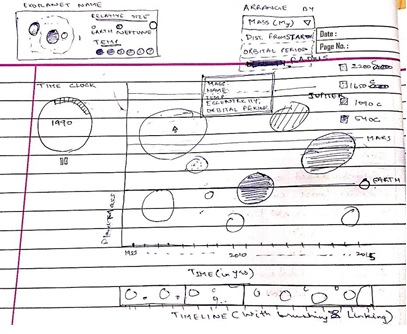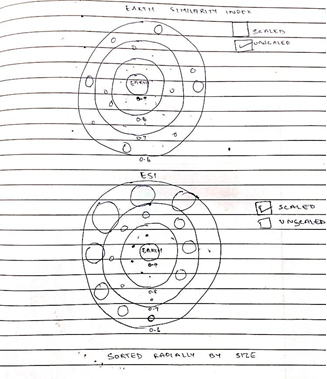Unfolding The Mysteries Of Exoplanets
Until nearly two decade ago, our understanding of how planets revolve around a star and how life forms on the planet was based only on one sample set – Earth and its solar-system. As NASA’s Kepler Space Telescope science team was wrapping up a 10-day trial run, they saw something that bordered on the unbelievable, the telescope's first detection of a rocky, Earth-sized world outside our solar system. Astronomers in the recent years have made significant progress in expanding the database of planets outside of our solar system. These extrasolar planets are termed as Exoplanets.
These worlds come in a huge variety of sizes and orbits. Some are gigantic planets hugging close to their parent stars, while others are icy, and some are rocky. Most of these exoplanets have been found by NASA's Kepler mission. NASA and other agencies are looking for a special kind of planet, one that’s the same size as Earth, orbiting a sun-like star in the habitable zone.
The habitable zone is the range of distances from a star where a planet’s temperature allows liquid water oceans, critical for life on Earth. The earliest definition of the zone was based on simple thermal equilibrium, but current calculations of the habitable zone include many other factors, including the greenhouse effect of a planet’s atmosphere. This makes the boundaries of a habitable zone fuzzy.
METHODS OF DISCOVERY
Radial velocity
A star with a planet will move in its own small orbit in response to the planet's gravity. This leads to variations in the speed with which the star moves toward or away from Earth, i.e. the variations are in the radial velocity of the star with respect to Earth. The radial velocity can be deduced from the displacement in the parent star's spectral lines due to the Doppler effect. The radial-velocity method measures these variations in order to confirm the presence of the planet using the binary mass function.
Transit Photometry
While the radial velocity method provides information about a planet's mass, the photometric method can determine the planet's radius. If a planet crosses (transits) in front of its parent star's disk, then the observed visual brightness of the star drops by a small amount; depending on the relative sizes of the star and the planet. For example, in the case of HD 209458, the star dims by 1.7%. This method has two major disadvantages. First, planetary transits are only observable when the planet's orbit happens to be perfectly aligned from the astronomers' vantage point. The second disadvantage of this method is a high rate of false detections. A 2012 study found that the rate of false positives for transits observed by the Kepler mission could be as high as 40% in single-planet systems.
Astrometry
This method consists of precisely measuring a star's position in the sky, and observing how that position changes over time. Originally, this was done visually, with hand-written records. By the end of the 19th century, this method used photographic plates, greatly improving the accuracy of the measurements as well as creating a data archive. If a star has a planet, then the gravitational influence of the planet will cause the star itself to move in a tiny circular or elliptical orbit. Effectively, star and planet each orbit around their mutual center of mass, as explained by solutions to the two-body problem. Since the star is much more massive, its orbit will be much smaller. Frequently, the mutual center of mass will lie within the radius of the larger body. Consequently, it is easier to find planets around low-mass stars, especially brown dwarfs.
Direct imaging
Planets are extremely faint light sources compared to stars, and what little light comes from them tends to be lost in the glare from their parent star. So in general, it is very difficult to detect and resolve them directly from their host star. Planets orbiting far enough from stars to be resolved reflect very little starlight, so planets are detected through their thermal emission instead. It is easier to obtain images when the star system is relatively near to the Sun, and when the planet is especially large (considerably larger than Jupiter), widely separated from its parent star, and hot so that it emits intense infrared radiation. Images have then been made in the infrared, where the planet is brighter than it is at visible wavelengths. Coronagraphs are used to block light from the star, while leaving the planet visible. Direct imaging of an Earth-like exoplanet requires extreme optothermal stability. During the accretion phase of planetary formation, the star-planet contrast may be even better in H alpha than it is in infrared – an H alpha survey is currently underway.
Gravitational microlensing
Gravitational microlensing occurs when the gravitational field of a star acts like a lens, magnifying the light of a distant background star. This effect occurs only when the two stars are almost exactly aligned. Lensing events are brief, lasting for weeks or days, as the two stars and Earth are all moving relative to each other. More than a thousand such events have been observed over the past ten years.

